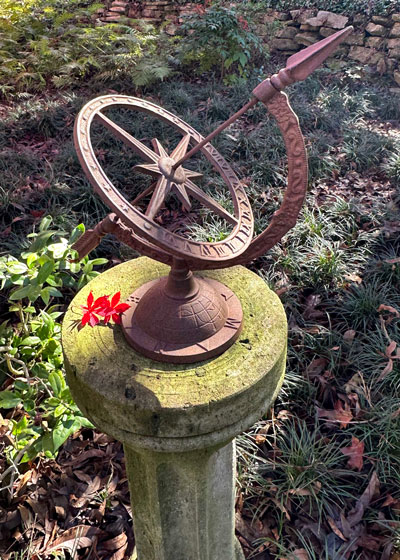Shout Out to Japanese Maples
Hear me clearly, gardener! These aren’t red maples (Acer rubrum). Those are the large trees native to the forests of New England that give them the finest fall color in all of the world. They’re dark green all summer, turning brilliant shades in the fall. But it’s their red flowers in the spring that give this species its common name.
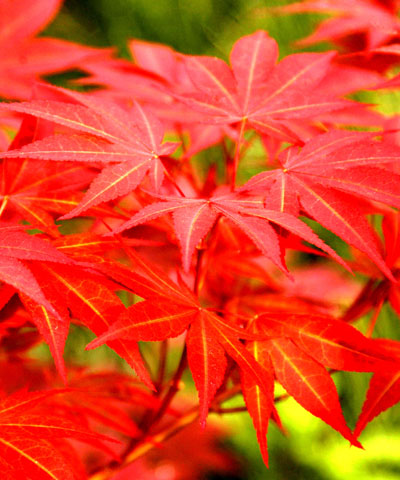
But enough on “red maples.” We’re here today to talk about “Japanese maples,” all from the species Acer palmatum. The confusion comes in because most of the popular Japanese maples have red leaves, while most of the popular red maples have green leaves (until fall).
Confused? Hopefully not. I’ll simplify it from here on out by sticking with just the little star of the show.
Japanese maples – the facts to know:
• Acer palmatum (hundreds of named varieties are sold in the market, but only 15 or 20 are common.)
• Mature heights and widths range from 8 to 18 ft., although some are much shorter and some grow much taller. The species itself is a green-leafed tree growing to 25 to 30 ft. tall and wide.
• Leaves are multi-pointed star shapes, but some are deeply fringed for ultra-light visual textures.
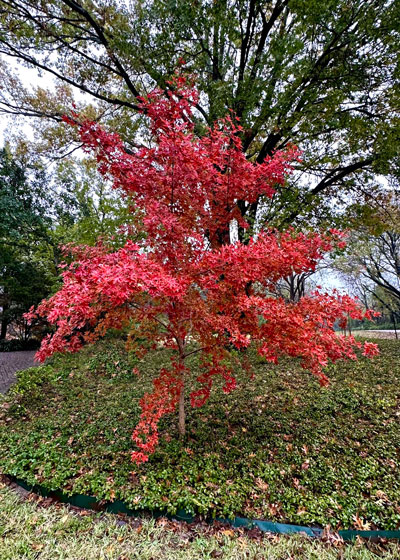
• Some of the types have upright-rounded habits of growth, while others are actually weeping.
• Japanese maples are native to cool, moist conditions of 80F weather and humid environments. Our Texas summers are not their best allies.
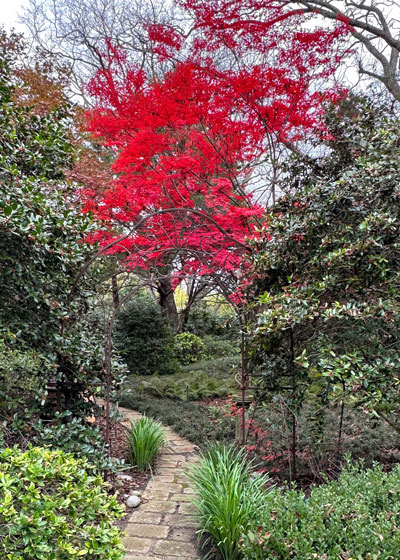
• For that reason it’s usually best to grow Japanese maples in full shade (or at least in shade after late morning). The farther west you go in the state the more critical that becomes. Full sun is out of the question.
• If you have a tree that develops leaf scorch (tips and ends of leaves browned by mid- or late summer each year), that’s moisture stress. Either you need to water it more often or more deeply or both, or you should consider moving it to a shadier setting. Winter is the time to do so.

• Japanese maples make outstanding “understory” tree where you want color, textural interest and a third dimension to your plantings beneath large shade trees.
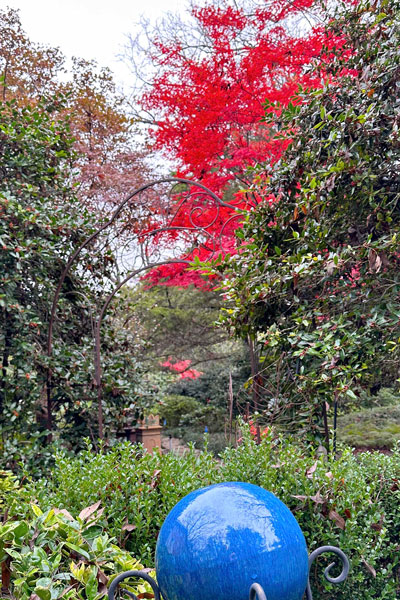
I’ve planted a dozen or more Japanese maples in our rural Collin County landscape over the years, and if you ask my wonderful wife (the non-gardener) which are her favorite plants in our entire gardens, I’m sure they’d get named first. I’m almost as certain that the name “Bloodgood” would tag right along, too. It’s the red-leafed variety that holds its color best from spring, through the summer and all the way until frost.
So, that’s my story on Japanese maples in a nutshell. Unless you live where it’s too dry to consider them, you might enjoy adding one to your plantings.
